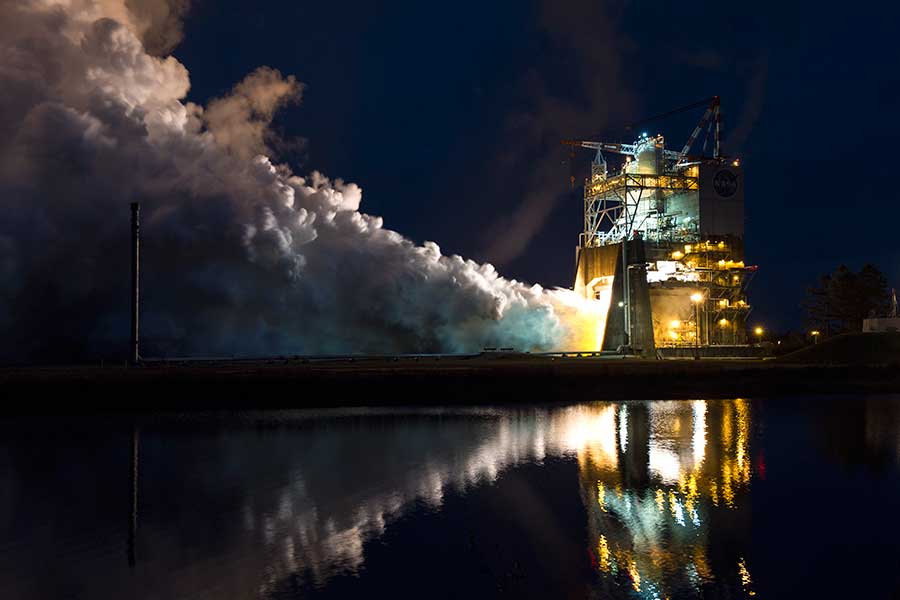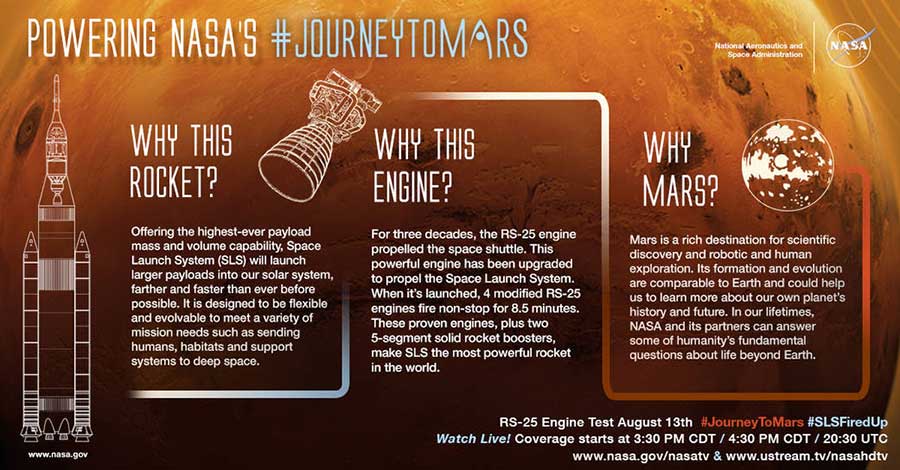Mississippi – The most famous governmental space agency, NASA, historically prefered the classic designs that have always proven to work over the modern ones. The RS-25 has been the favorite rocket engine used by the experts to take humankind to the outer space since 1981. Designed by Aerojet Rocketdyne on the late 70’s, this powerful piece of engineering has gained their prestige position by showing effective results. Of the sixteen RS-25s standing by for Space Launch System’s duty, 14 of them have already been to space.
This old but effective design has been chosen to lead the engine system that’ll keep supplied of power the SLS. Each one cranks out more than 181000 kilograms of thrust at sea level, and runs for more than six minutes during launch on a mixture of liquid hydrogen and liquid oxygen. Although the fuel economy is brutal, it is still the most efficient engine of their type.

“It is the most complicated rocket engine out there on the market, but that’s because it’s the Ferrari of rocket engines,” said Kathryn Crowe, RS-25 propulsion engineer.
Modernizing the engine controller could be one of the actions to take to ensure the next generation of launch vehicles. They need to know if the new engine work at the higher temperatures and pressures the SLS will require to perform, so they test them. However, It surely will be heavier – and move faster – than the Space Shuttle.
The Space Launch System core stage is designed to be disposable, as opposed to the Shuttle Orbiters that returned to runways. The new plans for RS-25 variants is to be disposable from the beginning, using more efficient modern manufacturing methods to make them affordable.
While we wait, NASA has a few more missions to launch. The scientistic administration will start testing the last of its old RS-25S for flight readiness at the Stennis Space Center this fall.

SOURCE: NASA

My wife Karen and I were at Stennis Space center for the 13 August test. That “hot fire” test was one of the most awesome things I have ever seen – or HEARD! Congratulations, and thanks, to the SLS and RS-25 teams at NASA, SSC, MSFC, MAF and Aerojet Rocketdyne for their success and hospitality this past week. Go RS-25! Go SLS!